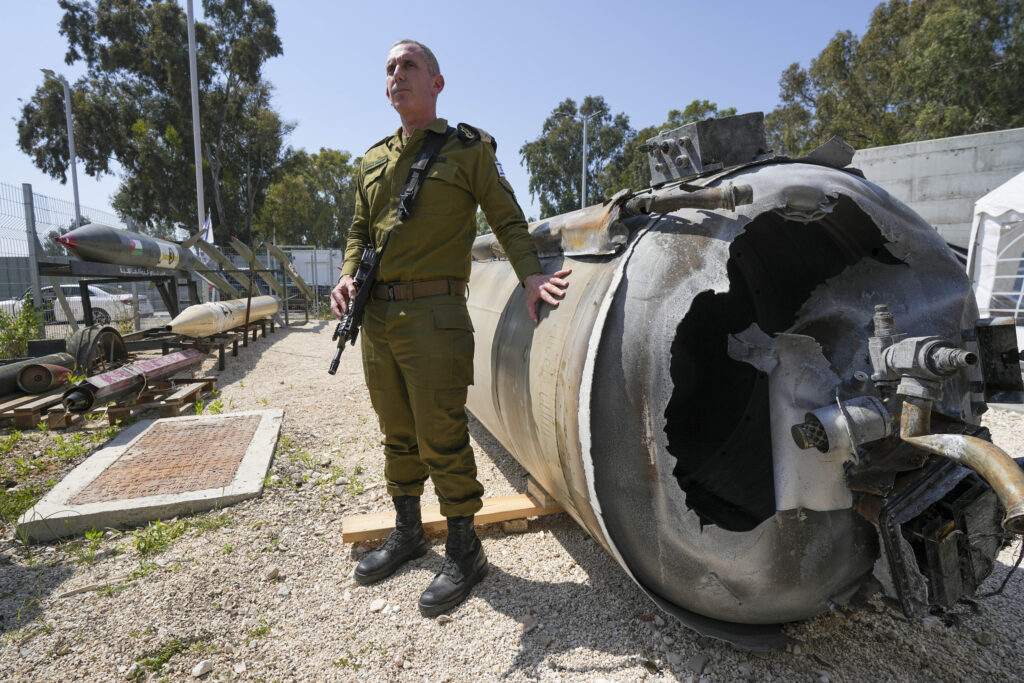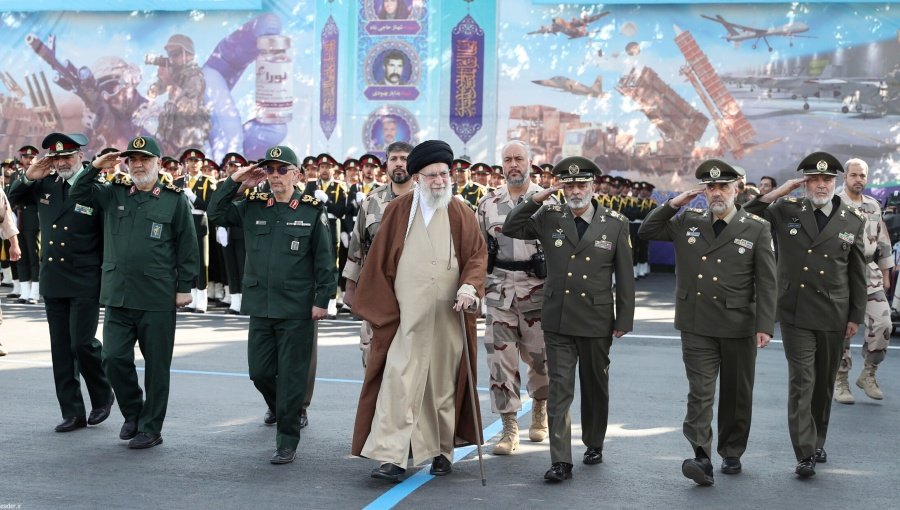Iran is back at its old game — testing boundaries and provoking its neighbors and the West — this time through a spate of recent ballistic missiles launches. In response, Secretary of State John Kerry spoke last week of offering Iran some vague “new arrangement” to address its ballistic missile program, and many in Congress have resorted to a tried-and-true response: more sanctions.
But Iran’s provocations are taking place in a new political and strategic context, one fundamentally altered by last summer’s nuclear agreement and the region’s spiraling conflicts. In this context, warmed-over U.S. policies, however well intentioned, are inadequate. The best chance to stop Tehran’s ballistic missile program, box in its ambitions and begin to restore U.S credibility now comes from boosting America’s ballistic missile defense capabilities, and those of our regional allies, and threatening to shoot down any ballistic missile Iran launches in the future. If credibly delivered, such a threat would compel Tehran to back off its tests.
Since the signing of the nuclear agreement in July, Iran has conducted at least three sets of tests of nuclear-capable ballistic missiles, which can carry nuclear weapons and, in some cases, reach not only Israel and Turkey, but our East European allies. The first two launches violated U.N. Security Council Resolution 1929, which bans Iran from such activities. However, the third set of test fires occurred only several weeks ago, after the resolution implementing the nuclear deal had taken effect. This new resolution merely calls on Iran not to undertake such activities, rather than prohibiting them.
The United States and its partners dealt with previous Iranian infractions by levying ever more stringent sanctions on the rogue nation. Those sanctions were partly aimed to pressure Iran to enter negotiations, which eventually led to the nuclear deal. Under that agreement, the legal strictures on Iran’s ballistic missile activity, among other non-nuclear issues, have been eased, and Tehran has taken advantage of that by expanding its ballistic missile activity — despite, or because of, the imposition of some new sanctions.
Our responses to these Iranian provocations have so far been insufficient. Heaping more unilateral sanctions on Iran now will have only limited impact. And Iran rejected Kerry’s vague offer. In the post-nuclear deal era, a new set of responses to Iranian belligerence is needed.
The U.S. must respond in a way that both effectively punishes Iranian behavior and reassures our allies. That response should come in the form of investment and expansion of a capability too long ignored by the Obama administration: ballistic missile defense.
We already have the necessary capabilities to shoot down anything Iran can put in the air, or destroy on the ground what it seeks to put in the air. Our first line of missile defense is Aegis ship-based systems on U.S. Navy destroyers and cruisers in the Persian Gulf and Gulf of Oman. These are backed up by land-based Patriot and Terminal High Altitude Aerial Defense batteries operated by all our Middle East allies. In December, an additional ground-based Aegis site came online in Romania. Each of these systems was designed to intercept missiles of equal or longer range, and more sophisticated countermeasures, than anything in Iran’s existing arsenal.
Linked with U.S. radar stations in Israel, Qatar and Turkey to detect and track launches specifically by Iran, these BMD systems can fire and guide multiple surface-to-air interceptors to destroy an Iranian missile in flight above the atmosphere or in its terminal phase — either with a head-on collision or a shotgun-like area blast. Overall, this creates overlapping layers of defense against the medium-range ballistic missiles Iran has recently tested. This network could also intercept intermediate-range ballistic missiles that could reach Europe if Iran’s program continues apace.
Even as Iran doubles down on missiles, the United States and our allies are in good position to maintain our defensive edge. The Navy is already working to increase its fleet of Aegis-capable ships by more than a third, and to equip them with longer-range and more accurate interceptors. Meanwhile, the United States and its allies are busy procuring additional THAAD batteries.
It should be U.S. policy to utilize its existing BMD capabilities, starting immediately, to intercept the short- and medium-range ballistic missiles Iran has been testing and make painfully clear to Iran’s leaders that we are prepared to do so. Previous declarations and demonstrations of U.S. forces have compelled Iran to change course. For example, in early 2012, Iran backed down from its threat to close the Strait of Hormuz after the United States declared such a move a red line and sent a second U.S. Navy carrier group through the strait. Also, Iran altered its nuclear program, finding a way to limit its stockpile of enriched uranium, after Israeli Prime Minister Benjamin Netanyahu in 2012 drew a red line over a specific stockpile level.
Intercepting Iran’s missiles would deny Iran the technical benefits of successful test launches, blunting its progress on longer range, more survivable and more accurate missiles — including an intercontinental ballistic missile capable of reaching the continental United States later this decade. It would also send an unmistakable signal to Iran and its allies, as well as to our own nervous allies, of the superiority of U.S. military capabilities and our willingness to use them.
In the face of an aggressive, determined and strategic Iran, the United States also must begin investing in a more robust regional BMD capability. We have invested more than $3 billion to co-develop Israel’s multi-layered air defense system of Iron Dome, David’s Sling and Arrow. It is time to invest in similar cooperation on BMD capabilities with other allies threatened by the growing Iranian menace.
The U.S. government should explore a coordinated BMD system that ties in the Gulf Cooperation Council, Jordan, Egypt and Israel. Such a network could integrate in real time dispersed THAAD, Arrow, Patriots, and sea- and land-based Aegis systems to provide a comprehensive defense against Iranian threats.
We have the capability to slow, and even set back, Iran’s ballistic missile program. Unfortunately, we lack a policy to utilize this capability. Sen. Ted Cruz recently declared that as president he would threaten to shoot down Iranian ballistic missile test firings, but so far no other presidential candidate of either party or other leading policymakers have done so. Unless we leave no doubt about our readiness and willingness to shoot down these missiles, we not only encourage the further dissolution of U.S. influence and our allies’ insecurity but ultimately allow Iran to continue developing missiles that could eventually reach the United States.
Gen. Charles Wald, Retired, is former deputy commander of U.S. European Command and senior adviser to JINSA’s Gemunder Center for Defense and Strategy. Michael Makovsky, a former Pentagon official in the George W. Bush administration, is chief executive officer of the Jewish Institute for National Security Affairs.













